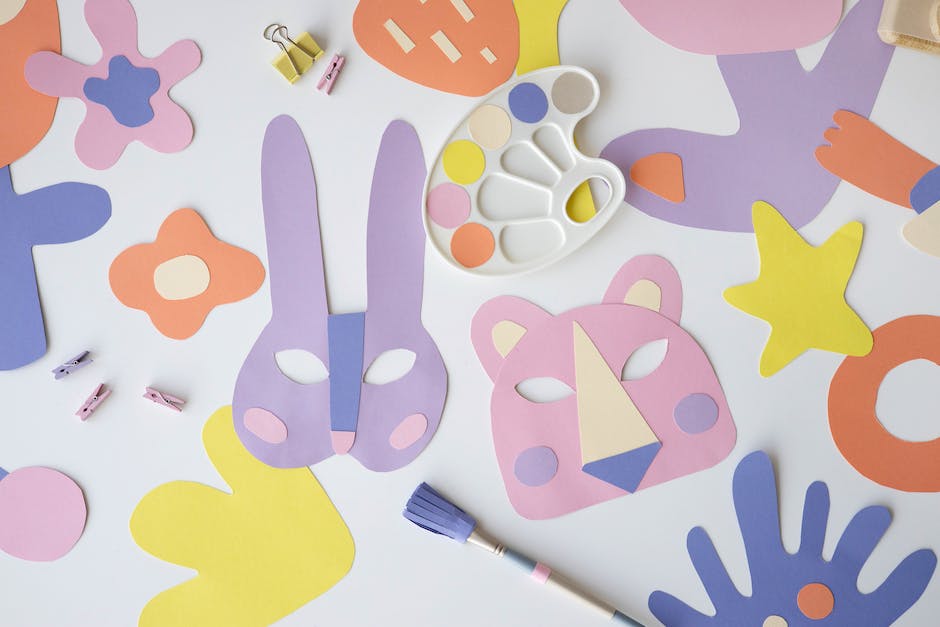The endeavour to craft a captivating art portfolio is much akin to painting a self-portrait; it requires introspection, a meticulous hand, and a keen eye for the finest details. As one embarks on this venture, the first strokes are laid by curating a collection of one’s superlative works. This initial curation is not merely about showcasing one’s technical prowess, but it is about narrating an intimate tale of artistic evolution. It demands the selection of pieces that resonate with your distinctive voice, challenging you to delve deeper into the diversity of your skill set and the breadth of your expression through varied mediums and subjects. We embark together on this journey of arrangement — a meticulous process where your mettle as an artist is both celebrated and scrutinised.
Curate Your Best Work
Title:
Curating Your Artistic Identity: Assembling a Show-Stopping Portfolio
Embarking upon the journey of selecting pieces for an art portfolio is quite the thrilling expedition. It’s more than just sifting through stacks of work; it’s an intimate process of self-discovery and a vivid declaration of one’s artistic prowess. With a profound understanding of this creative crucible, gleaned through years of immersing oneself in the diverse and electric London art scene, here are some vital pointers to curate a portfolio that not only showcases one’s talent but is also an embodiment of one’s unique artist’s signature.
First and foremost, identify what you stand for as an artist. This is about distilling the essence of your vision, your themes, and the messages you wish to convey. Your portfolio must be a symphony of artworks that speak in profound harmony about your skills and concept, not a cacophony of disparate works.
Once you have your thematic compass, it’s time to evaluate your pieces with a critical eye. Opt for diversity, but not at the cost of coherence. You want to demonstrate range – different mediums, subjects, and techniques – staking a claim to your versatility. Yet, each piece must undeniably whisper your name, resonating with your distinct style.
Quality is king – or queen, in this artistic realm. Select works that boast of your highest level of craftsmanship. This is no time for mediocrity; choose the crème de la crème of your creations that underscore your technical expertise. The brushwork, the fine lines, the balanced compositions – these are the ambassadors of your technical savoir-faire.
Narrative is your trump card. Include pieces that tell a story, that evoke emotions and invite the viewer to pause, ponder, and lose themselves in a visual spectacle. Art is a dialogue, and your portfolio is your side of the conversation. Make it engaging, provocative, and memorable.
Consider the presentation – it’s the packaging of your artistic product. Use high-quality images, crisp and well-lit, capturing the nuances of each work. This is the first impression of your portfolio; make it a professional one. Additionally, the ordering of works can lead the observer on a curated walk through your growth and explorations.
Don’t forget life drawings or sketches. These raw, unrefined gems often capture the spur of the moment brilliance and reveal the foundations of your skill. These studies are a testament to your understanding of form, perspective, and anatomy – the building blocks of any great artist.
Finally, listen to the pulse of your environment. London’s innovative art scene is a hotbed of inspiration – allow experiences from gallery visits, art fairs, and underground exhibitions to naturally infuse your selection process. What are the prevailing winds? How does your art compete with, complement, or challenge the emergent trends?
Creating an art portfolio is about sculpting your professional identity with each piece you select. Be meticulous. Be bold. Let each work unfurl a chapter of your creative odyssey. Trust in the vitality of your talent and the power of your choices, for therein lies the artistry of a standout portfolio.

Present Your Work Professionally
Master the Art of Display: Pro Tips for Showcasing Your Creations
Launching your artwork into the spotlight is much like setting the stage for a spellbinding performance. A practised hand knows the dance well: each piece must play its role to perfection, the narrative must flow seamlessly, and the audience should leave with their hearts ablaze and minds whirling. Shall we begin?
First, ensure the lighting plays to your advantage. It’s all about the drama and nuance – the chiaroscuro that can turn a humble painting into a clamouring masterpiece. Utilise adjustable spotlights to cast a revealing glow on the textures and colours that you laboured over. Natural light? A capricious friend, but oh, when harnessed, your artworks will sing with vibrancy unreplicated by any artificial source.
As you arrange your work, mind the spacing. Adequate room for each piece prevents a visual cacophony. Treat your works as if they’re conversing in a salon, each requiring the courtesy of attention. They’re not just ‘hung’; they are positioned with intent, curating an experience that guides the viewer through your oeuvre with subtle finesse.
Frames are whispering guardians of your art. Partner with them sagely. Slick, modern pieces might call for minimalistic frames – sleek and unobtrusive, or perhaps they cry out for no frame at all, baring their very souls. Textured, traditional canvases, on the other hand, may seek solace in ornate timber, each groove and gilt echo reinforcing the journey your hand has drawn across the canvas.
Now, for labels and text panels: the unsung heroes of context. Each should be a metronome to the rhythm of your collection, ticking off beats of insight without overpowering the main melody. Details like titles, media, dimensions, and perhaps a sprinkling of your conceptual musings, must be concise, coherent, yet compelling. Lure the onlooker in with the promise of a narrative but leave spaces in between for personal interpretation.
Sometimes, supplementary materials can be the ribbon on the present – the extra thrill. Sketchbooks cracked open on plinths, brushes laying casually beside a palette, a looping video of your process – they invite the audience behind the velvet curtain, granting them a whispered secret of your creation’s birth.
Remember, an exhibit is a living entity that reverberates with the collective heartbeat of your work. Each wall, each corner, each breath of space contributes to this living tableau. As your audience meanders through your world, let nothing detract from the purity of their journey. Labels straight, glass polished, distractions banished.
Ever attended a London opening where the artist looms, a spectre amongst their work? Instead, be the eloquent, elusive enigma. Present, certainly, but refrain from overshadowing the art with your presence. Entice with your absence; the work, after all, is the star of the soiree.
Lastly, the digital vista awaits – an art exhibition’s phantom twin. Craft an online gallery with the same careful curation you would a physical space. Here, pixels mimic brushstrokes, and screen sizes become your new walls to conquer. A discerning digital layout ensures your art resonates as forcefully in the virtual sphere as it does in the echoing halls of a gallery.
Art deserves nothing less than a stage that resonates with its depth and dynamism. Write your narrative, illuminate the undercurrents, and lay bare the heartbeat of your labour. In the grand theatre of art presentation, let your creations command the ovation they are due. Curtain call.

Craft an Artist’s Statement
An artist’s statement: it’s the poetic confessional of your creative existence, your manifesto, the microphone to the audience of your exhibition. It’s the bridge between your mind’s eye and the viewer’s perspective, the written embodiment of your quest as an artist. Let’s cut to the chase: this testament is vital because it offers a window into your soul, a curator’s dream, providing a peek into the crux of your work. It’s the narrative of your creations, the heartbeat alongside your pieces that resonates with those crossing the threshold of the gallery.
Now the brass tacks: how does one sculpt this paramount piece of text? An artist’s statement must be as carefully crafted as a masterpiece.
- Start with the seed of your motivation: Why do you create? Describe that urge, that burning necessity to produce that which only you can. Your raison d’être on paper.
- Be honest but don’t bare all. This isn’t your diary, after all. It’s a powerful, professional statement brimming with the passion that fuels your work.
- Economy of words; choose them like you’re picking paint for a canvas. Every word, every sentence, should be deliberate. This statement should dance with the same elegance as your art, not trample across the page.
- Relevance is key. You’ve absorbed the vibrancy of London’s galleries, brushed shoulders with the abstract, the surreal, the bold and the political. Weave these influences into your statement in a way that remains true to your voice.
- This isn’t a step-by-step manual, rather it’s an embodiment. Abandon shop-talk and jargon. Speak in a tongue that invites both the neophyte and the connoisseur.
- Reflect the evolution of your work. Cap it at 200 words; anything more, and you risk the flickering attention wandering.
- Tailor for the audience. If it’s for the gallery in Shoreditch, be crisp, contemporary. For the conservatoire, dip your words in a pot of tradition and heritage.
- Read it aloud. It should flow like the strokes on your canvas, the click of a camera, the soft malleable yielding of clay between fingers.
- Edit, refine, and distil. Your art deserves the clarity of thought, the purity of understanding.
- Ask for feedback. Yes, that fellow student, that mentor, a stranger who drifts into your portfolio site. Gauge their reactions, their understanding.
When all is inked and set, remember, your artist’s statement isn’t a mere footnote; it’s the prelude to your exhibition, the whisper in the viewer’s ear. As they meander through the curated dance of your works, let it be the pulse that guides, informs, and enlightens.
So go ahead, capture that vibrancy, that raw energy akin to the night after your final crit, the dawn of your first exhibit, and translate it to words. Your statement is your ally, your shadow in text form, dignifying your corner of the art world. Make sure it stands tall, proud, and as compelling as the art itself. No summation needed; your work, enriched by your words, will speak volumes.

To present an art portfolio is to lay bare your artistic soul, a gesture both vulnerable and bold. It is a curated exhibit of your toil and triumphs, a vivid mosaic brought together with patience and purpose. As we draw this discourse to its close, let us remember that a portfolio is more than a mere assembly of art; it is a visual narrative, a testament of one’s growth and a prologue to future masterpieces. It stands as your ambassador in the esteemed galleries of art schools, speaking volumes in silent eloquence. May your portfolio echo the depth of your passion and the height of your aspirations, bridging the gap between the artist you are and the artist you aspire to become.

























